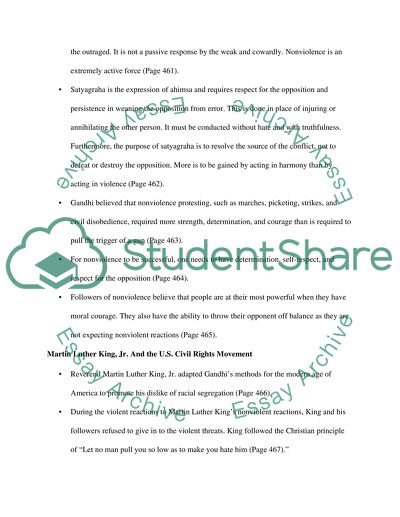Gandhis Return to India: Nonviolence Essay Example | Topics and Well Written Essays - 750 words. https://studentshare.org/history/1584008-chapter-21-nonviolence
Gandhis Return to India: Nonviolence Essay Example | Topics and Well Written Essays - 750 Words. https://studentshare.org/history/1584008-chapter-21-nonviolence.


